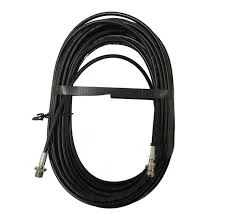Exploring Versatile Small Hose Connector Options for Efficient Watering Solutions
Small hose connectors are essential components widely used in various applications, ranging from gardening and agriculture to construction and industrial settings. These connectors serve as critical links in fluid transfer systems, ensuring that hoses can be securely joined to each other or to other equipment. Their compact size and versatility make them indispensable tools in many scenarios.
One of the key advantages of small hose connectors is their ability to facilitate easy and efficient connections. Typically made from durable materials such as plastic, brass, or stainless steel, these connectors provide reliability and resistance to corrosion, which is crucial for maintaining the integrity of fluid transfer systems. The design of these connectors often includes features such as quick-release mechanisms or threaded fittings, allowing users to connect and disconnect hoses swiftly without the need for specialized tools.
In gardening, small hose connectors play a vital role in irrigation systems. Gardeners often use them to connect hoses to sprinklers, drip systems, or watering wands. By using these connectors, they can create customized watering solutions that meet the specific needs of their plants, ensuring efficient water distribution while minimizing waste. Similarly, in agricultural settings, farmers utilize hose connectors to link irrigation lines and enable targeted watering strategies that enhance crop yields.
small hose connectors

In industrial applications, small hose connectors are integral to various machinery and equipment. They are commonly found in hydraulic systems, where they connect hoses that transport fluids under high pressure. The reliability of these connectors is crucial, as any leaks or disconnections can lead to serious operational issues. Additionally, in manufacturing settings, they are used for vacuum and air lines, contributing to the efficient functioning of pneumatic tools and equipment.
The market for small hose connectors has grown significantly, influenced by advancements in manufacturing technologies and materials. As users increasingly seek durable and efficient connectors, manufacturers are continually innovating to produce high-performance products that meet diverse needs. This trend has led to a rise in customizable options, allowing users to choose connectors that precisely fit their equipment and application.
In conclusion, small hose connectors are indispensable in a variety of settings due to their ability to ensure secure fluid connections. Whether in gardening, agriculture, or industrial applications, these connectors enhance efficiency, reliability, and flexibility in fluid transfer systems. As technology continues to advance, the development of small hose connectors will likely evolve, further improving their performance and application scope.
-
Ultimate Spiral Protection for Hoses & CablesNewsJun.26,2025
-
The Ultimate Quick-Connect Solutions for Every NeedNewsJun.26,2025
-
SAE J1401 Brake Hose: Reliable Choice for Safe BrakingNewsJun.26,2025
-
Reliable J2064 A/C Hoses for Real-World Cooling NeedsNewsJun.26,2025
-
Heavy-Duty Sewer Jetting Hoses Built to LastNewsJun.26,2025
-
Fix Power Steering Tube Leaks Fast – Durable & Affordable SolutionNewsJun.26,2025

